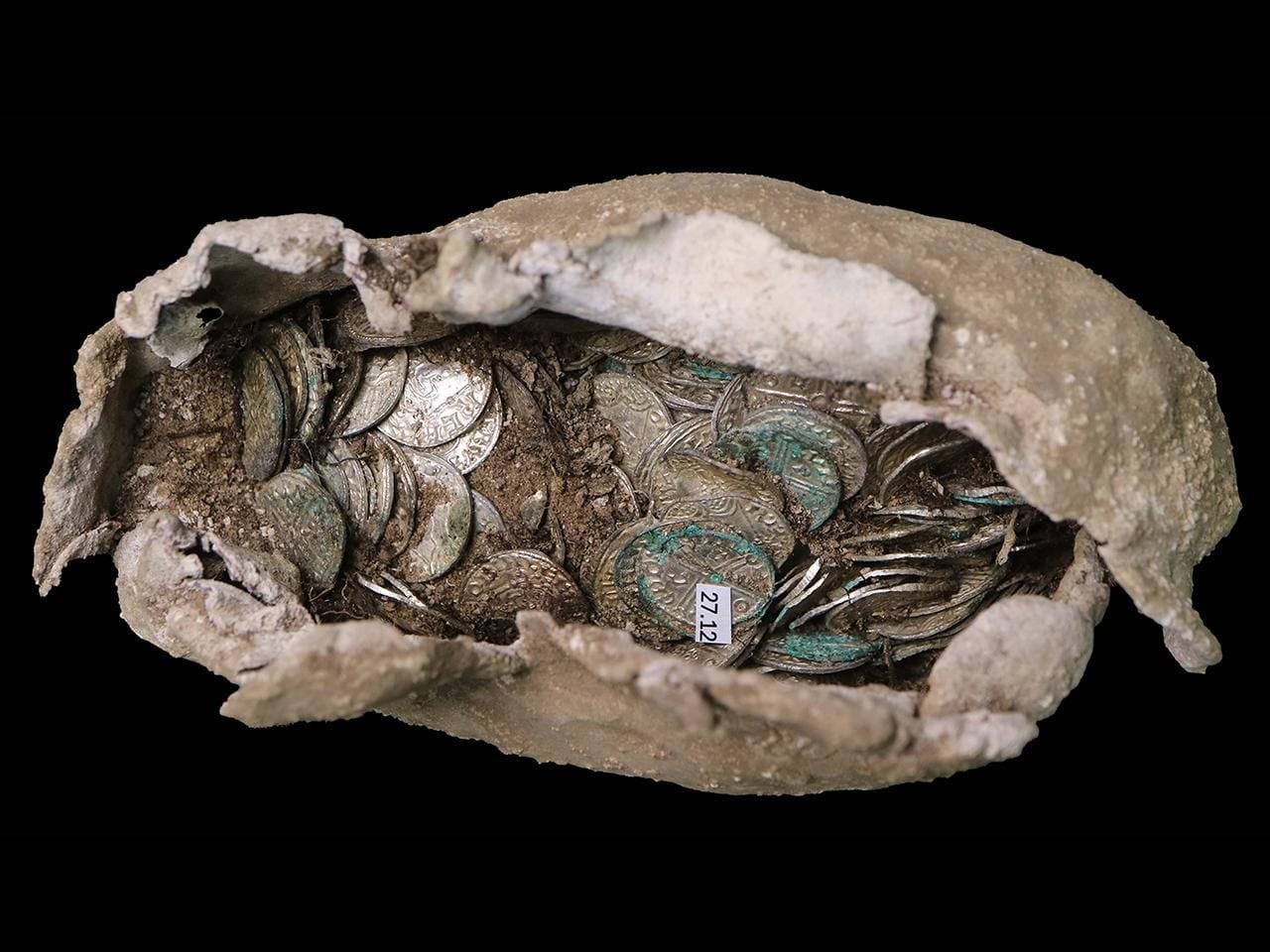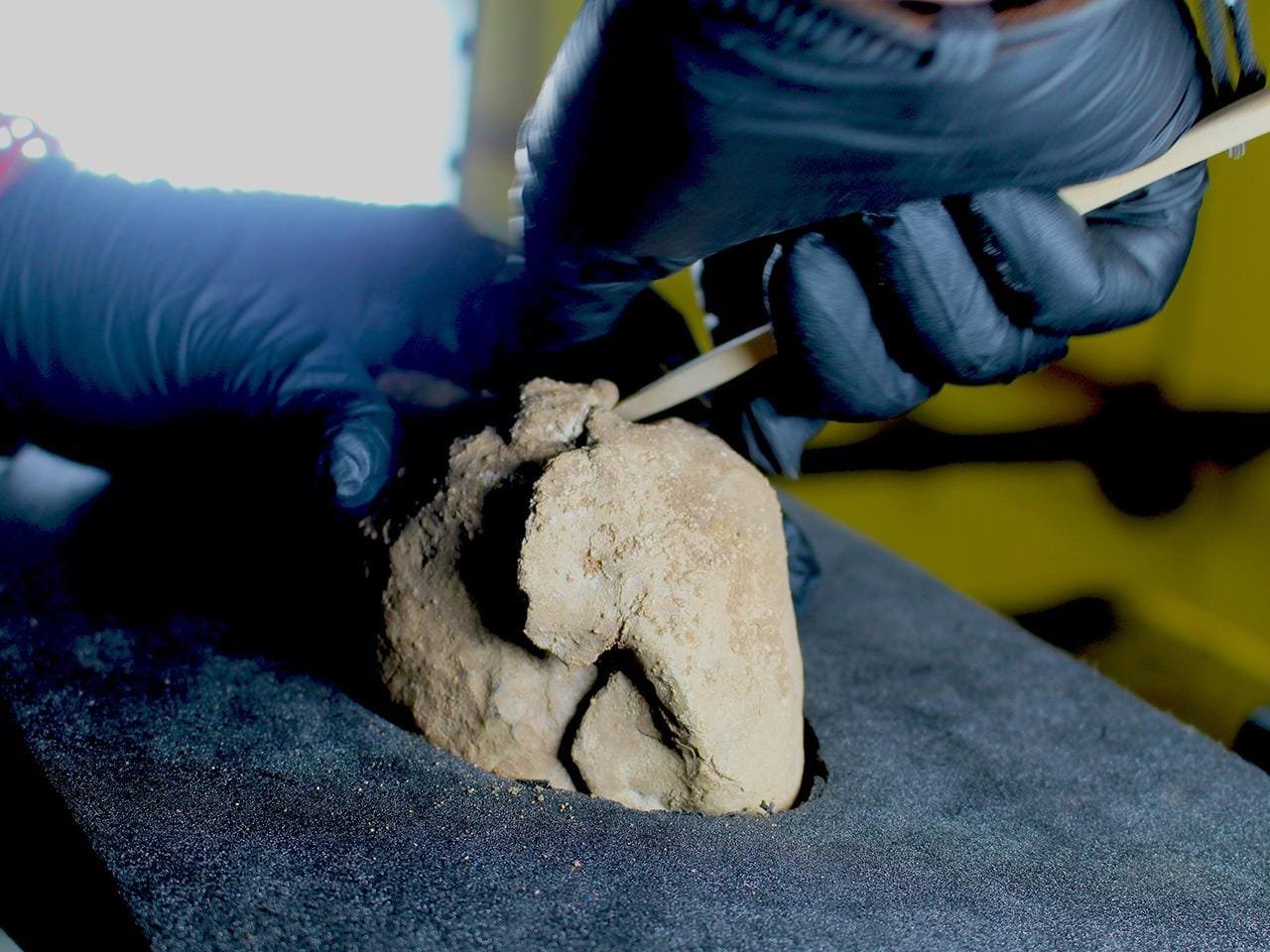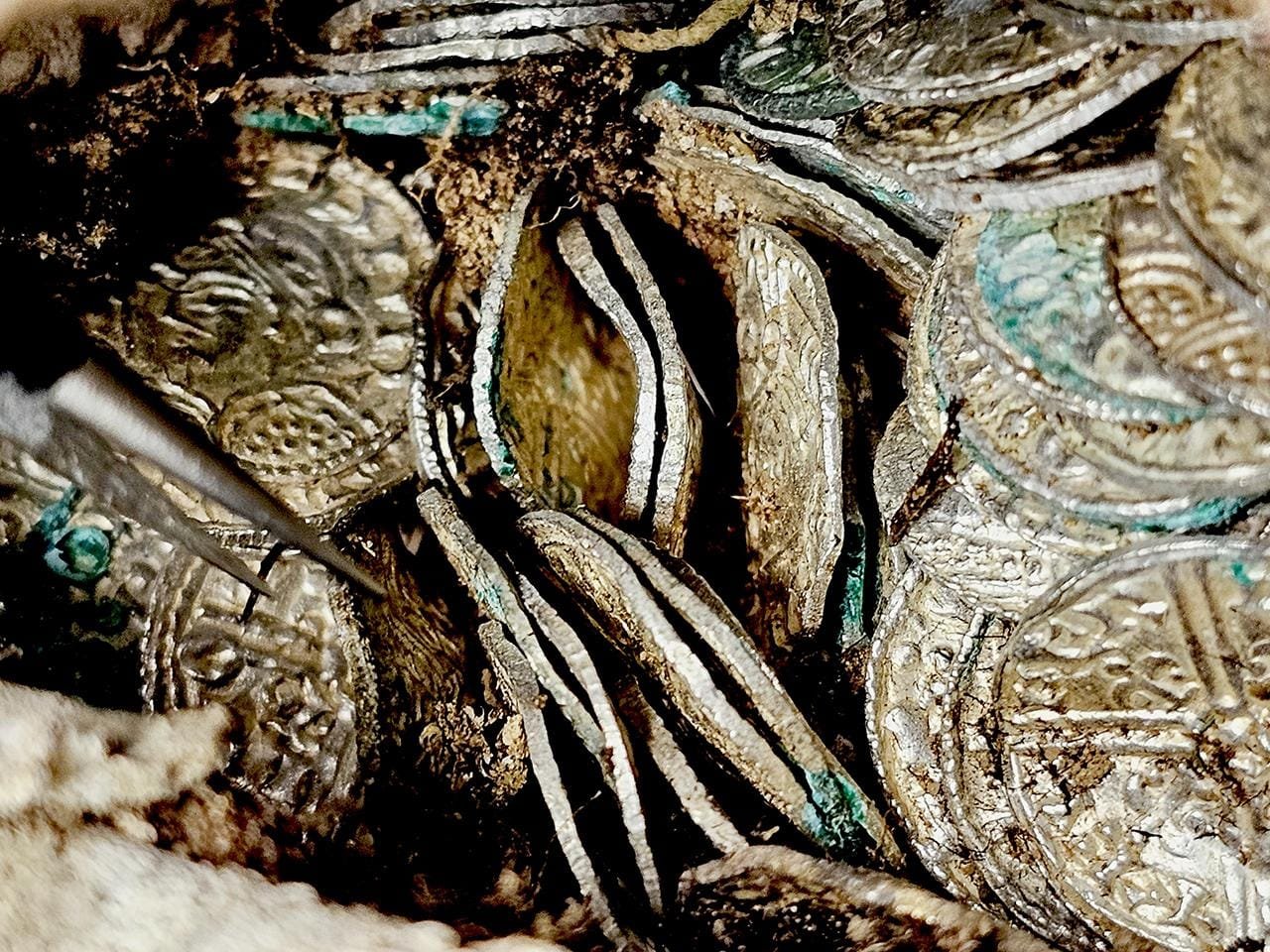A unique hoard of 321 silver coins from the 11th century has been unearthed during archaeological work at the Sizewell C nuclear power station site in Suffolk, England. These coins, surrounded by lead and once wrapped in a cloth that has since decayed, are part of a “perfect archaeological time capsule,” said Andrew Pegg of Oxford Cotswold Archaeology (OCA), which is excavating the site.
 A hoard of 11th-century silver coins has been found at the site of Sizewell C. Credit: Oxford Cotswold Archaeology
A hoard of 11th-century silver coins has been found at the site of Sizewell C. Credit: Oxford Cotswold Archaeology
The coins, issued from 1036 to 1044, span the reigns of Harold I, Harthacnut, and Edward the Confessor. Most were minted in London, but others came from regional mints, including at Thetford, Norwich, and Ipswich, and even smaller places like Langport and Axbridge in southwest England.
Experts believe the hoard was buried during a period of political upheaval following Edward the Confessor’s coronation in 1042, marking the restoration of the House of WesSєx after 25 years of Danish rule under King Cnut and his sons.
The archaeologist Andrew Pegg described the moment he uncovered the treasure, nicknamed “the pasty,” for its size and shape: “I was shaking when I first unearthed it, seeing a single coin edge peeking at me. The information we are learning from it is stunning, and I’m so proud to have added to the history of my own little part of Suffolk.”
 A conservator pries open lead sheet encasing the coin hoard. Credit: Oxford Cotswold Archaeology
A conservator pries open lead sheet encasing the coin hoard. Credit: Oxford Cotswold Archaeology
Containing mostly silver pennies, the hoard offers insights into the economic conditions and social structures of England in the 11th century. It was worth the equivalent of 16 cows at the time and likely belonged to a moderately well-off person — possibly a successful farmer or tradesman. The burial spot at the intersection of two medieval boundary lines indicates that it was chosen for retrievability, though the owner never returned to get it.
Coin specialist Alexander Bliss from OCA noted the hoard’s broader historical importance: “This new coin hoard provides valuable insight into the rich historical backdrop of this period, adding to the evidence that Edward the Confessor’s accession to the English throne was marked by a degree of uncertainty and concern within wider society.”
 The coins were minted in various locations. Credit: Oxford Cotswold Archaeology
The coins were minted in various locations. Credit: Oxford Cotswold Archaeology
The discovery is part of a larger effort to study the site before the construction of Sizewell C, a two-reactor nuclear power station expected to generate 3.2 gigawatts of energy. Previous excavations have unearthed a variety of artifacts, including World War II equipment and an Iron Age wooden axle.
Damian Leydon, site delivery director at Sizewell C, described the find as “extraordinary,” emphasizing its contribution to understanding Suffolk’s rich history. “This project provides a rare and fascinating glimpse into Suffolk’s past, deepening our understanding of this part of Britain. In partnership with Oxford Cotswold Archaeology, we plan to make these discoveries as accessible to the public as possible,” Leydon said.
The hoard will feature in the upcoming season of Digging for Britain on BBC Two and iPlayer, ensuring that the public can engage with this fascinating chapter of England’s history.
More information: Oxford Cotswold Archaeology





